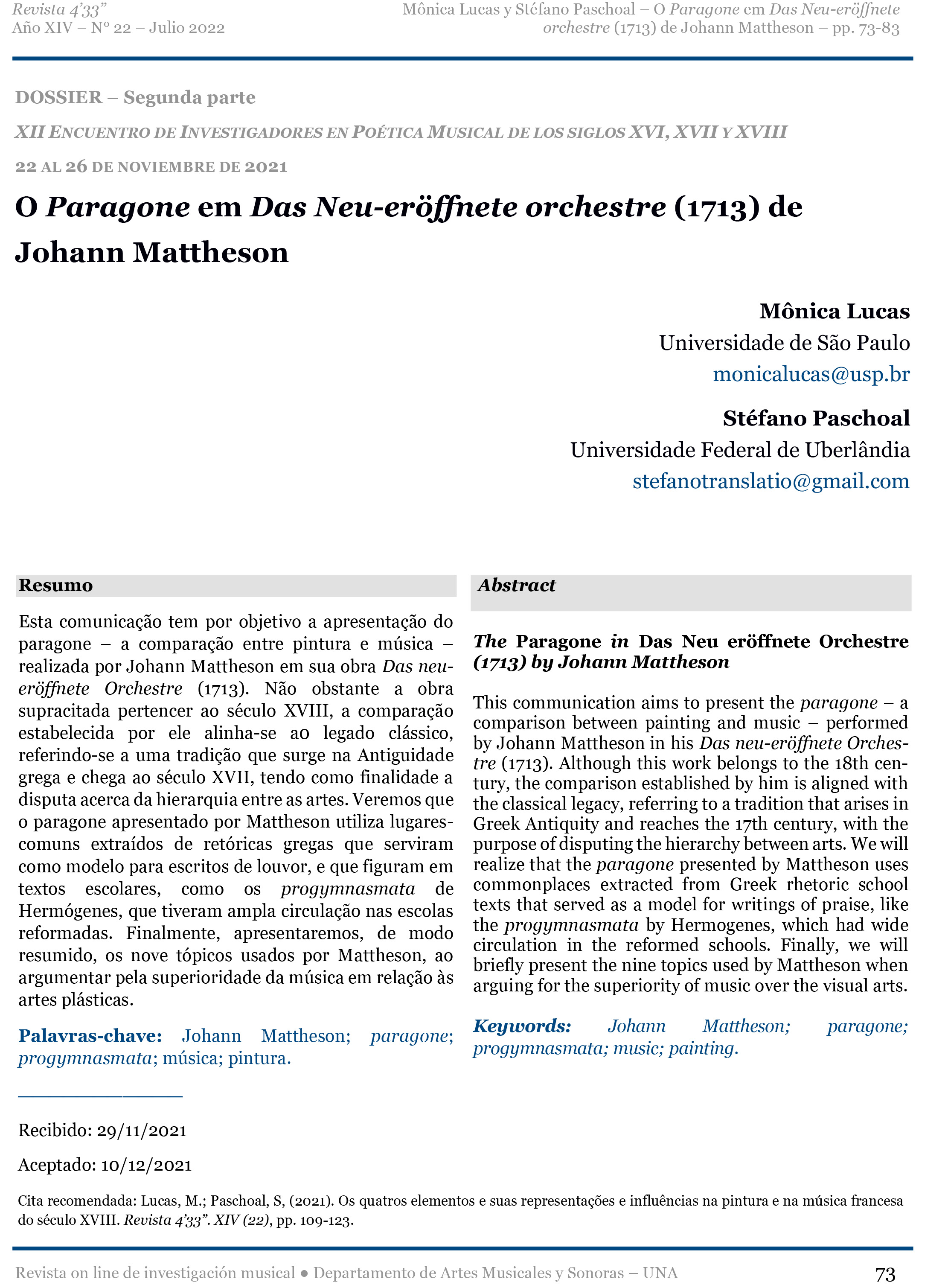O Paragone em Das Neu-eröffnete orchestre (1713) de Johann Mattheson
Keywords:
Mattheson, paragone, progymnasmata, música, pintura, music, paintingAbstract
Esta comunicação tem por objetivo a apresentação do paragone – a comparação entre pintura e música – realizada por Johann Mattheson em sua obra Das neu-eröffnete Orchestre (1713). Não obstante a obra supracitada pertencer ao século XVIII, a comparação estabelecida por ele alinha-se a0 legado clássico, referindo-se a uma tradição que surge na Antiguidade grega e chega ao século XVII, tendo como finalidade a disputa acerca da hierarquia entre as artes. Veremos que o paragone apresentado por Mattheson utiliza lugares-comuns extraídos de retóricas gregas que serviram como modelo para escritos de louvor, e que figuram em textos escolares, como os progymnasmata de Hermógenes, que tiveram ampla circulação nas escolas reformadas. Finalmente, apresentaremos, de modo resumido, os nove tópicos usados por Mattheson, ao argumentar pela superioridade da música em relação às artes plásticas.
ABSTRACT
The Paragone in Das Neu eröffnete Orchestre (1713) by Johann Mattheson
This communication aims to present the paragone – a comparison between painting and music – performed by Johann Mattheson in his Das neu-eröffnete Orches-tre (1713). Although this work belongs to the 18th cen-tury, the comparison established by him is aligned with the classical legacy, referring to a tradition that arises in Greek Antiquity and reaches the 17th century, with the purpose of disputing the hierarchy between arts. We will realize that the paragone presented by Mattheson uses commonplaces extracted from Greek rhetoric school texts that served as a model for writings of praise, like the progymnasmata by Hermogenes, which had wide circulation in the reformed schools. Finally, we will briefly present the nine topics used by Mattheson when arguing for the superiority of music over the visual arts.


